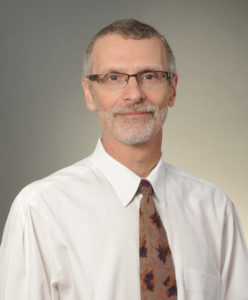
A new Northwestern Medicine study has uncovered how a key enzyme in mitochondria can function as either a cancer suppressor or cancer promoter.
The study, published in Nature Communications, was led by David Gius, MD, PhD, professor of Radiation Oncology and Pharmacology. Gius is also vice chair for translational research in the Department of Radiation Oncology and a member of the Robert H. Lurie Comprehensive Cancer Center of Northwestern University.
Manganese superoxide dismutase (MnSOD), an antioxidant enzyme located in mitochondria, is thought to play an important role in aging, with potential implications for age-related diseases such as cancer. However, it has long been unclear why MnSOD appears to function as both a tumor suppressor and a tumor promoter.
“There’s a duality where some studies suggest MnSOD prevents aging and cancer, and there are others showing that MnSOD can be a tumor promoter,” Gius said. “It’s an unexplained observation. How can a protein that appears to be anti-aging and anti-cancer also be pro-cancer?”
In the current study, Gius and his collaborators demonstrated that a post-translational modification called lysine acetylation determines the function of MnSOD.
The scientists showed that when MnSOD is in the form of a homotetramer — a protein complex made up of four identical subunits — it functions as a superoxide dismutase, breaking down reactive oxygen radicals and acting as a tumor suppressor.
However, when an acetyl group is added to a specific lysine called K68 as a result of metabolic stress, MnSOD is transformed into a monomer. In this form, it functions as a peroxidase and tumor promoter.
“This is primacy. This is the first time anyone has shown that the mammalian MnSOD protein can be anything other than a superoxide dismutase,” Gius explained.
In the study, the team demonstrated that the monomer form of MnSOD not only acts as a tumor promoter but also induces resistance to tamoxifen — the most commonly prescribed drug for patients with breast cancer. The scientists further found a signature for the MnSOD monomer in a group of breast cancer cells resistant to tamoxifen.
“It may explain why women with high-risk, receptor-positive breast cancer develop resistance to endocrine therapy, which is the standard of care,” Gius said.
Yueming Zhu, PhD, a postdoctoral fellow in Gius’ laboratory, and Xianghui Zou, ’17 PhD, a graduate of Driskill Graduate Program in Life Sciences (DGP), were co-first authors of the paper.
“Overall, our study provides a framework for interpreting the link between the acetylation-dependent structural forms of MnSOD and their roles in transformation and tumorigenesis, as well as potential therapeutic modalities,” Zhu said.
The research was supported by 2R01CA152601-A1, 1R01CA152799-01A1, 1R01CA168292-01A1, 1R01CA214025-01, the Avon Breast Cancer Foundation, the Lynn Sage Cancer Research Foundation, the Zell Family Foundation and the Chicago Biomedical Consortium, as well the Searle Funds at The Chicago Community Trust; U.S. Department of Defense grant 67263-RT-REP and NIH 1RO1HL125356 award; a Robert H. Lurie Comprehensive Cancer Center Translation Bridge Fellowship Award; Chicago Cancer Baseball Charities at the Lurie Cancer Center; 5R01AI092825-07. Imaging work was performed at the Northwestern University Center for Advanced Microscopy, which is supported by NCI CCSG P30 CA060553, awarded to the Lurie Cancer Center. Proteomics services were performed by the Northwestern Proteomics Core Facility, supported by NCI CCSG P30 CA060553 awarded to the Lurie Cancer Center and the National Resource for Translational and Developmental Proteomics supported by P41 GM108569. The structural analyses of MnSOD were performed at the Northwestern University Structural Biology Facility, which is supported by NCI CCSG P30 CA060553 awarded to the Lurie Cancer Center.






